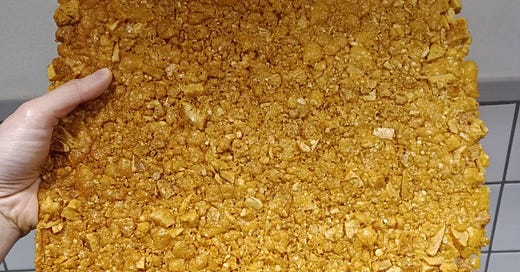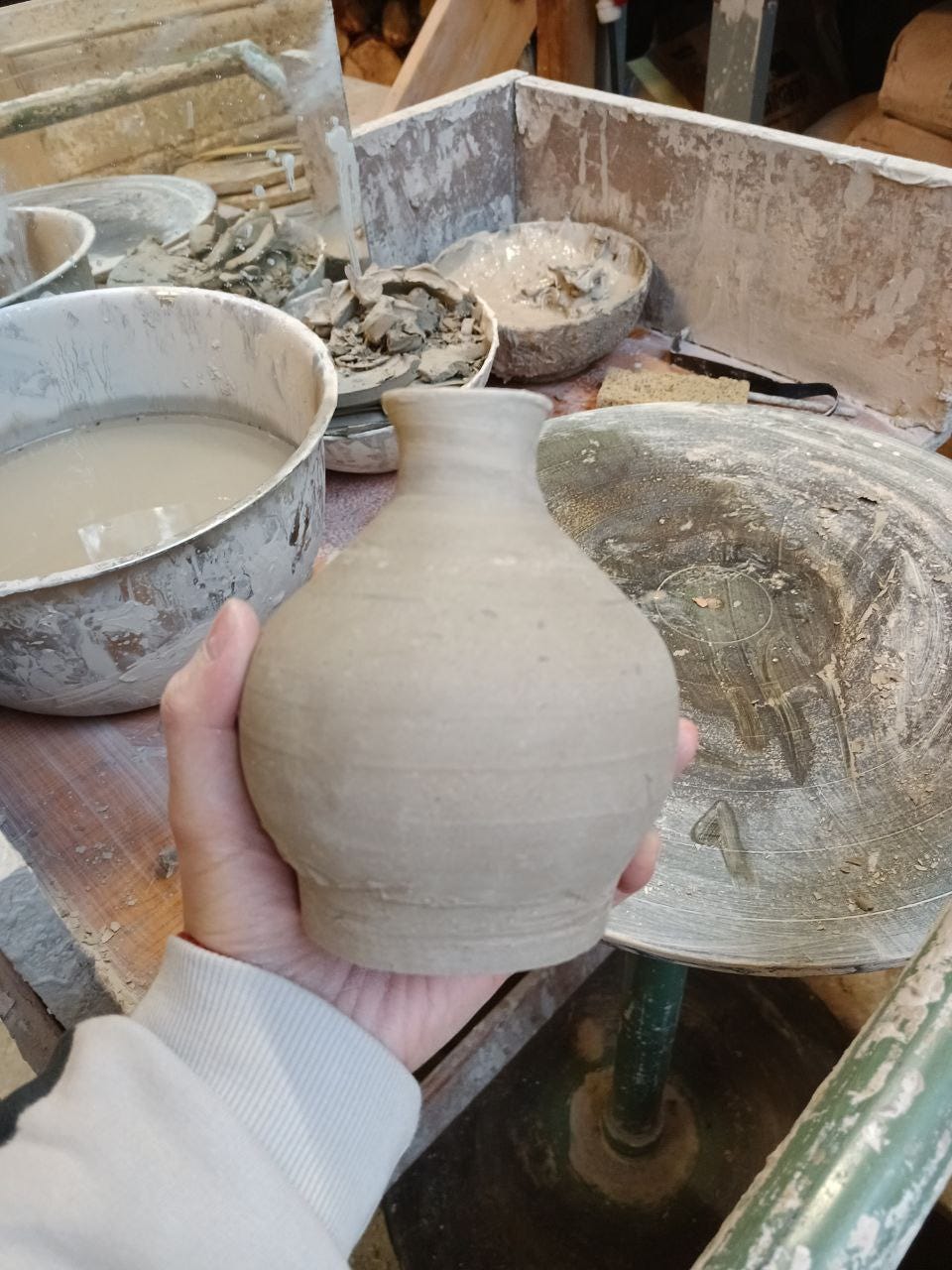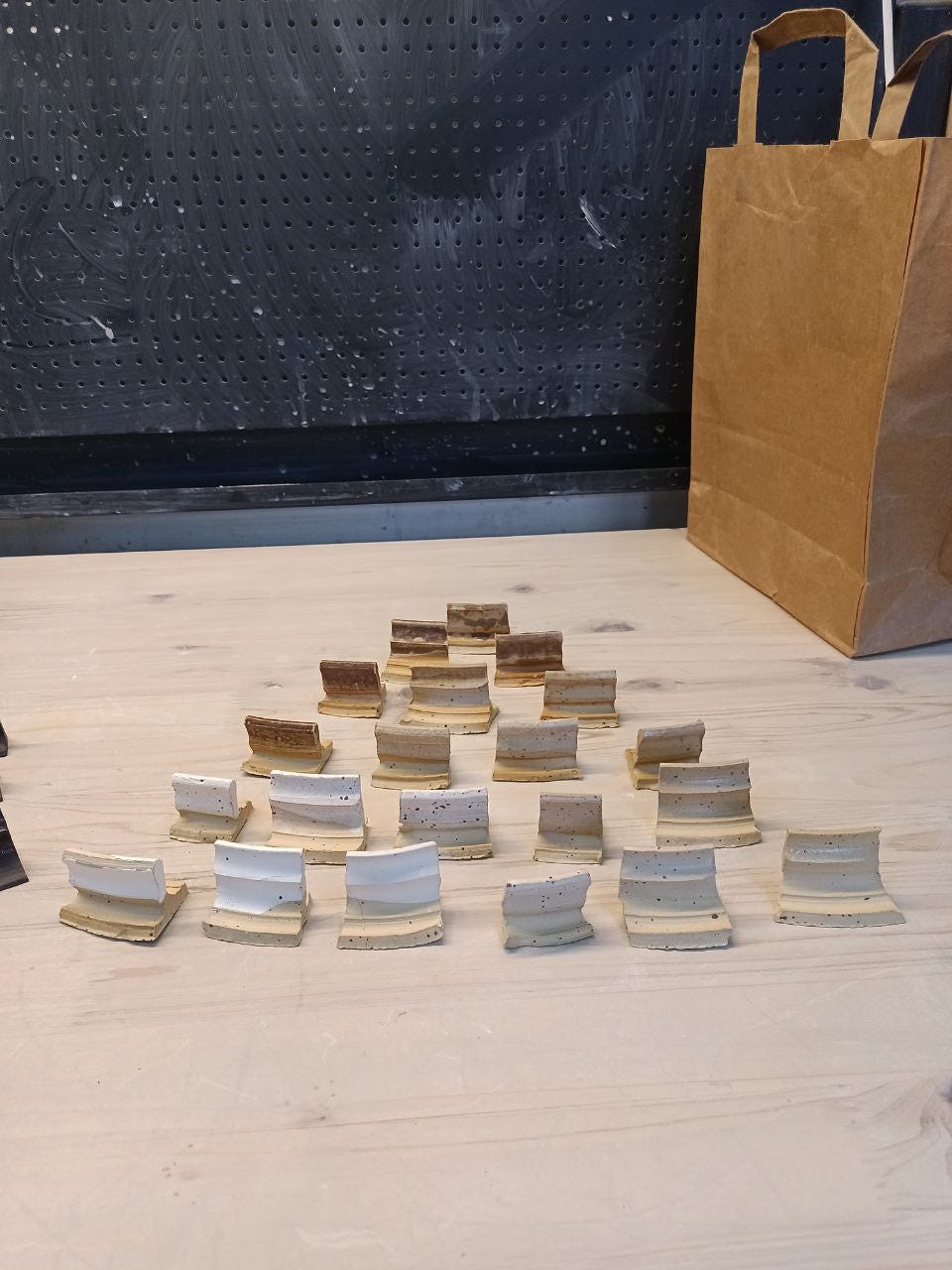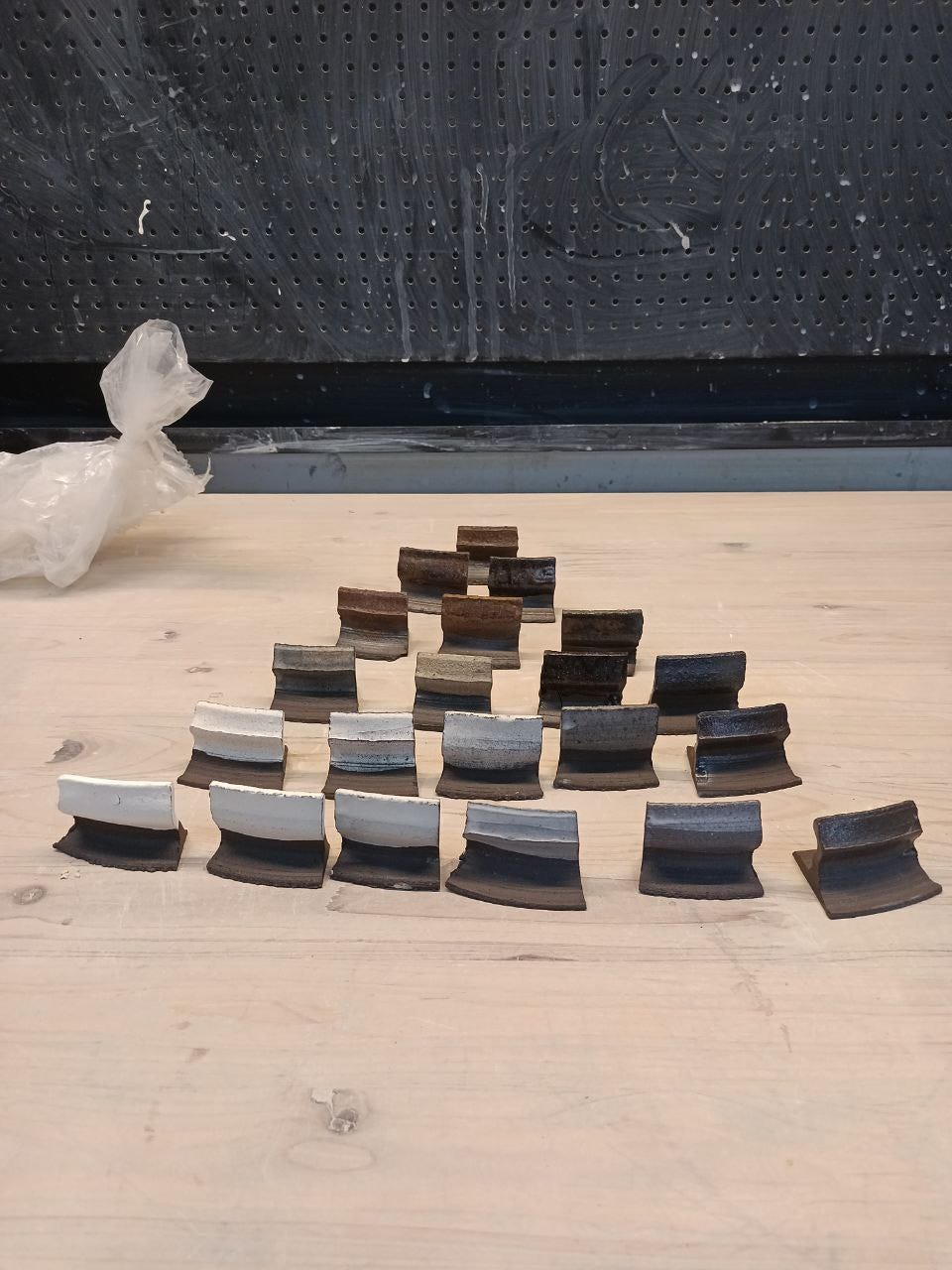Parmigiano Garum, Double Whey Garum, & Testing Ash Glazes
Hello friends,
Last week I started preparing some ferments for the next supper club themed around salt, clay, and ash. First up, as a flavor booster for the nixtamalized buckwheat pasta dish I’m working on: Parmigiano garum. In case you want to try:
Parmigiano Garum
750g Parmigiano rinds
300g fresh rice koji
800g water
225g salt
Freeze the Parmigiano rinds slightly (about 30 minutes) before pulsing them in a food processor. They should look like coarse chunks about the size of peas.
Toast the Parmigiano chunks until they are a golden brown color. I did about 75 minutes at 175°C because I was afraid of burning them. If you’ve ever made frico, you’ll know that even if your shredded cheese looks medium brown it can taste burnt. Err on the side of lighter, not darker.
Let the giant cheese frico you’ve created cool and break it into chunks. Place the chunks in the food processor with the rice koji and salt and pulse till a cohesive, fine-crumbed mixture forms. Add water and blend together. Transfer to a sanitized, very loosely sealed jar and hold the mixture at 60°C for 6 weeks. Alternatively, garum can be left at room temperature but enzymatic activity will be slower—about 3-6 months. Spoon off any oil that accumulates at the top as the garum develops to avoid oxidated fat flavors.
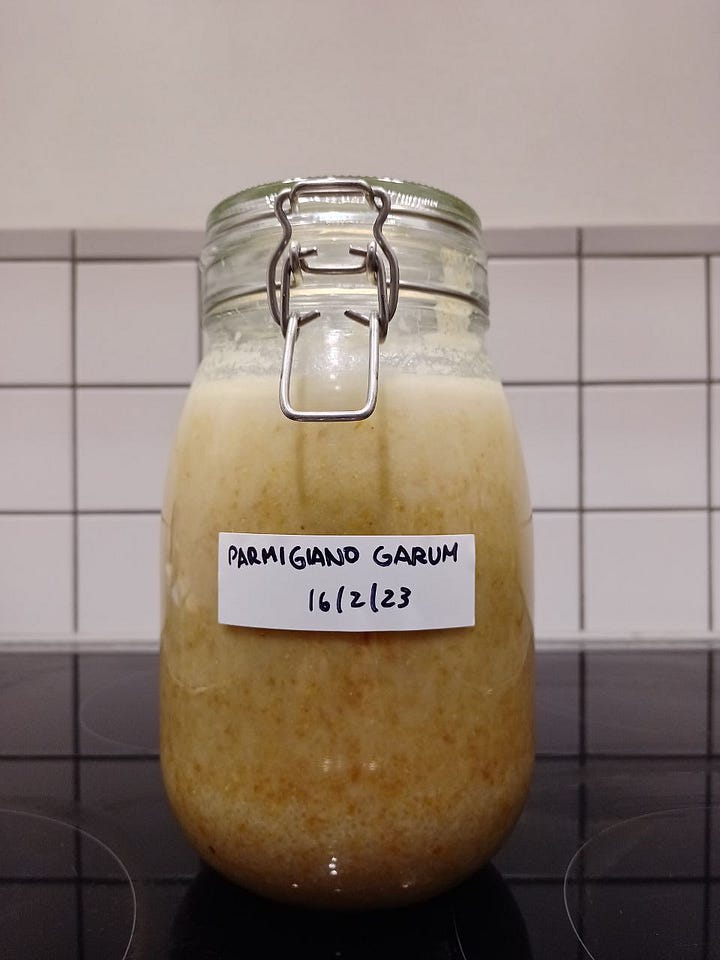
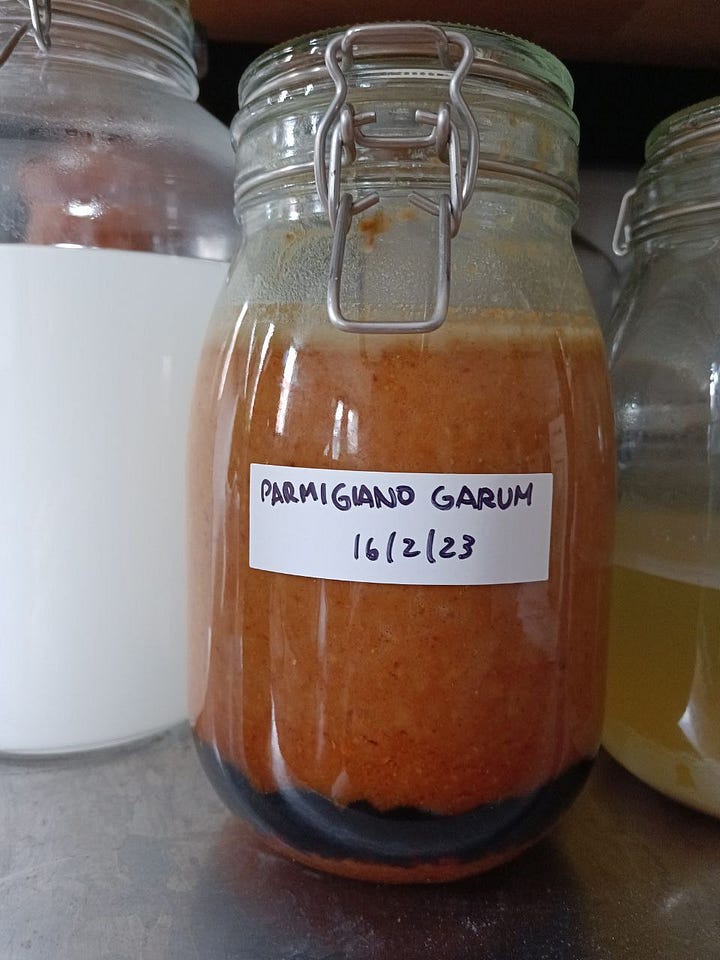
For those of you unfamiliar with garum, it’s an ancient Roman fish sauce made from salted small fish. Much like the fish sauce made in parts of Southeast Asia, garum and its smoother, less funk-forward Italian descendant, colatura di alici, are made by mixing salt and small fish, usually anchovies, that break down over time under the heat of the sun. What results is a deliciously dark, stinking, amino-rich liquid that can be used to boost savoriness in your cooking.
This process is fueled by enzymes naturally found in the fish’s digestive tract, an unappetizing and perhaps even mildly horrifying prospect until one considers that most cheesemaking traditions started with animal rennet produced in the stomachs of ruminants—and who doesn’t like cheese?*
*Modern cheeses are now mostly made with microbial or vegetable rennet. Interestingly enough, the milky sap from young fig leaves can be used to curdle milk, which I experienced while making fig leaf panna cotta last summer for a farm-to-table pop-up.
Unlike fish sauce, the parmigiano garum I started this week is fueled by koji enzymes rather than fish guts, and therefore it will be vegetarian-friendly. I’ve also been cooking a lot of Indian curries with homemade paneer lately so I ended up with a lot of whey after pressing the cheese. Yesterday I put it to good use and started a whey garum as well, since whey contains some carbohydrates (4.8%) and protein (.8%)—not super high since whey is mostly water. I will try to keep making paneer or fresh cheese of some sort in the next few weeks, collect and boil most of the water out of the whey in the meanwhile, and make “double-fermented” garum where I add another batch of fresh koji + concentrated whey to up the protein content available for the protease enzymes found in koji to break down. The more protein the more umami.
Buckwheat Noodle Update
Well, I managed to extrude my 100% buckwheat nixtamalized into noodles through a potato masher fitted with the right insert. Result: they are delicious and smell like buckwheat honey. Intensely floral, unlike any pasta or soba noodles I’ve had before. Slippery and bouncy like ramen, but with an entirely different aroma due to using calcium hydroxide as the alkaline source. Unfortunately, they do look like worms and I’m not about to spring for an industrial pasta extruder that could help me improve the shape that way. Talking to a chef friend, he convinced me to add a little wheat flour for some more elasticity in the dough, which was always an option but I wanted to see if I could do a nixtamalized gluten-free buckwheat noodle completely by hand and still pass it through a pasta roller. Updates on wheat additions next time.
Ash Glaze Testing & Pumpwerkstatt
Last week I spent a day throwing at my friend’s ceramics studio, Pumpwerkstatt, in Grünau. He has a setup that is quite different from the ceramics studio I normally work at, so I had the (dis)pleasure of working on a DDR-era kickwheel. It looks something like this:
Yes, it’s meant to be manually powered by kicking while you throw. Did I do that? No—luckily this one came with a motor, but I was so out of my comfort zone that I only managed to throw two pieces in four hours, one of which I trimmed a hole in a few days later, and the second which looks like this:
It turns out that bad throwing sessions can be very useful though—I learned how to throw much drier, using slip rather than water. And my friend was lovely enough to correct some bad form as I was throwing. The next day I threw this back at my normal studio:
Onto ash glazes. In the past few weeks, I’ve been making ceramic test tiles and gathering the raw materials to test ash glazes on my ceramics. A lover of organized chaos, I decided to try a testing method called triaxial blending:

As you can see from the chart, there are three components to the glazes mixed in incremental ratios, basically creating a gradient of different glaze compositions. Very satisfying to see the outcome this way. The next step is to implement my potter friend Luis’ system of assessing glazes which I quite liked:

Lastly, I had my miso workshop at Bioase Kollektiv this past Saturday. The emphasis was on using seasonal produce so that day I looked around the shop to see what looked good. We made some pumpkin & golden beet miso with cannellini beans as a base. All the participants were so fun and genuinely curious—the best kind of students. Thanks for coming if you stopped by.
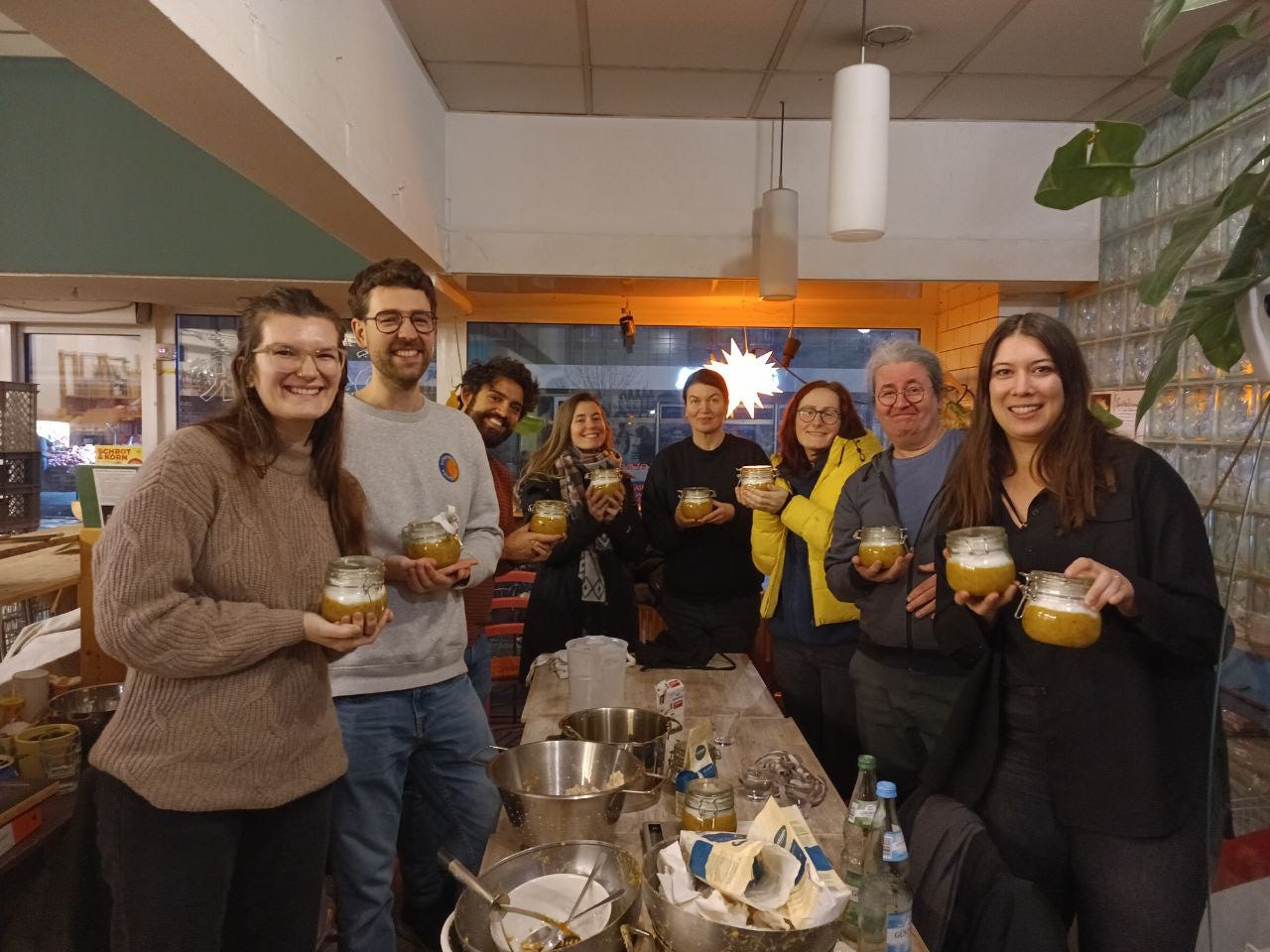
That’s all for now, thanks for reading!
Polly

